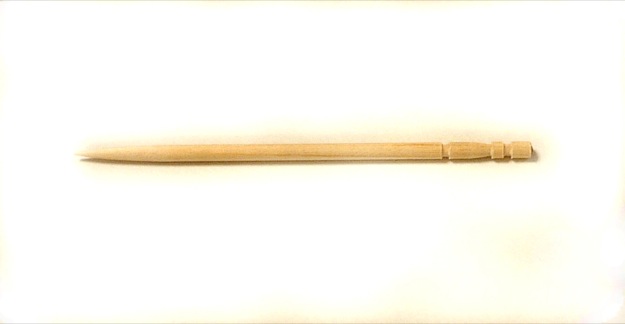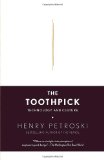
What do you know about the toothpick industry? Here are a couple of links that might enlighten you:
Toothpick manufacturers (most of them are in Maine) steam birch logs to make them easier to cut, then “veneer” them, which means they peel each log into a thin sheet, sort of like unrolling a roll of paper towels. Flat toothpicks are simply stamped out of the sheets, while round toothpicks are first cut into oversized blanks, then fed into a milling machine called a “rounder,” which grinds them down into little javelins, as you put it. No reconstituted toothpick has ever been made that matches birch for strength and low cost. You see plastic toothpicks occasionally, but they are hard on the gums and periodontists discourage their use–as do the makers of wooden toothpicks, not surprisingly.
Forster spent a decade attempting to combine an inventive new machine with the proper wood in a money-making enterprise. No inventor himself, he insinuated himself into the Boston-based manufacturing operation of Benjamin Franklin Sturtevant, whose revolutionary machines transformed logs into long, thin strips of veneer, then beveled opposing sides of one edge of each strip to form innumerable points. (Shoemakers fed the veneer strips into machines of their own, which chopped them into pegs used to attach soles to uppers.) At Forster’s urging, Sturtevant and his hardware specialist, Charles Freeman, tinkered for years before finally producing double-edge-pointed veneer, which could be chopped into toothpicks. In the meantime, they settled on birch for their raw material — because toothpick wood, explains Petroski, should be odorless and also have “sufficient stiffness to provide the appropriate leverage but not be so stiff as to be unyielding in the mouth.”
By the mid-1860s, Forster and his colleagues had developed a device that worked efficiently enough to produce a profitable product: a flat toothpick whose ends, as Petroski notes with a connoisseur’s approval, formed “wafer-thin points that could be worked into some of the tightest interdental spaces to attack plaque on a considerable amount of tooth surface.” Legend has it that Forster hired “Harvard scholars” to eat at restaurants, then ask loudly for toothpicks, a marketing strategy that paid off. By the end of the decade, orders were pouring in from hotels and restaurants, and the toothpick business would boom for a century.
